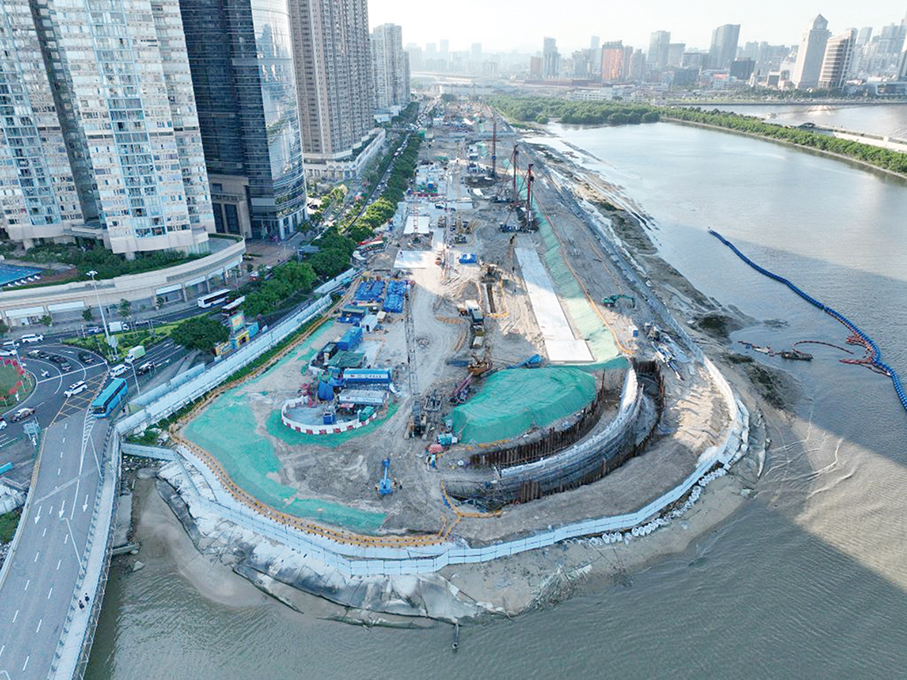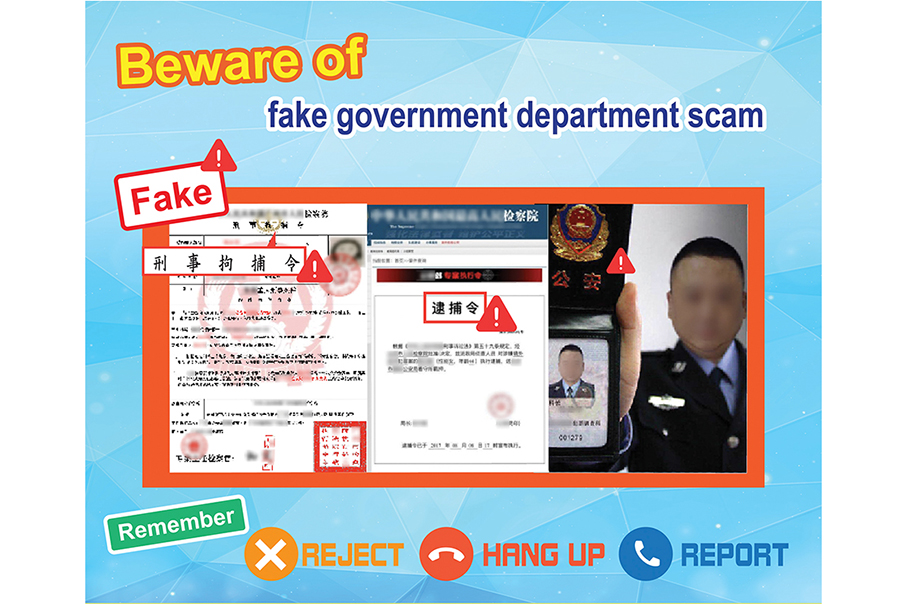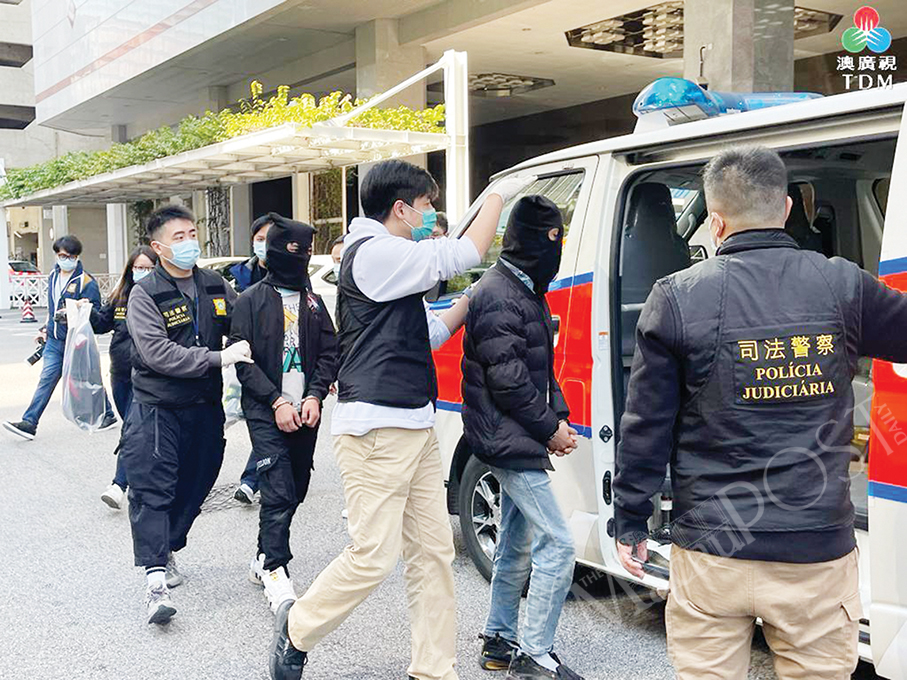The government has underlined that it is tackling the ongoing issue of wastewater being discharged untreated into the coastal waters off the peninsula’s northern waterfront, east of the Barrier Gate border checkpoint.
The government also said that it has discovered that the waterfront stench is due to sewer pipes having been mistakenly connected into rainwater drain outlets off the peninsula’s northern coast again.
However, the government has yet to announce when it expects the stench issue to be solved.
The Environmental Protection Bureau (DSPA) referred to the issue in a reply to a written interpellation made by directly-elected lawmaker Ron Lam U Tou in early November. The bureau made and signed the reply at the end of the same month, the copy of which was released by Lam’s office to the media on Saturday.
A section of the underwater Light Rapid Transit (LRT) East Line project is being carried out off the peninsula’s northern coast east of the Barrier Gate checkpoint, i.e., off the waterfront Avenida Norte do Hipódromo (馬場北大馬路) and Avenida da Ponte da Amizade (友誼橋大馬路). The project, which got off the ground in 2023, includes the land reclamation of the mudflats (aka tidal flats) off the coast.
The LRT East Line project is overseen by the Public Works Bureau (DSOP), the public entity tasked with organising and overseeing public infrastructure projects.
Sewage interception project in 2019
The Environmental Protection Bureau completed a sewage interception project off the coast in 2019 aiming to solve the then long-standing stench problem affecting residents living nearby. The project set up sewage interception facilities to collect wastewater at several rainwater drain outlets off the coast and divert the collected wastewater to the nearby Macau Peninsula Wastewater Treatment Plant.
In his written interpellation, Lam acknowledged that the sewage interception project completed in 2019 had significantly improved the then waterfront stench problem. However, Lam said, residents in the area have again been affected by waterfront stink since early last year.
Sewage still discharged from 2 rainwater drain outlets
According to Lam’s written interpellation, a number of residents submitted complaints about the issue to the government early last year, after which the Public Works Bureau replied to them in April that after the mudflat-reclamation project had started, it found that there were five rainwater drain outlets off the coastal Avenida Norte do Hipódromo, three of which were equipped with sewage pumping and interception facilities, but wastewater was still being discharged from the other two rainwater drain outlets.
In his written interpellation submitted in November last year, Lam said that while the Public Works Bureau had ordered the LRT East Line project’s contractor to implement special measures aiming to improve the waterfront stench problem, the issue had still not seen much improvement by that time.
Lam asked the government why the Environmental Protection Bureau did not install interception facilities in all the five rainwater drain outlets off the coast in its project in 2019 and what measures the government would implement to intercept wastewater still being discharged from the other two rainwater drain outlets.
Lam also asked the government about the additional facilities to be installed in its mudflat-reclamation project off the coast aiming to more effectively intercept wastewater.
In its reply to Lam’s written interpellation, the Environmental Protection Bureau said that a research institution hired by the bureau concluded in 2016 that wastewater was being discharged from only three rainwater drain outlets off the coastal Avenida Norte do Hipódromo because of which its then interception project, completed in 2019, only covered the three rainwater drain outlets.
The bureau said in the reply that it has preliminarily concluded that the waterfront stench occurring again is due to sewer pipes having been “newly” connected mistakenly into rainwater drain outlets off the coast.
New interception facilities
The Environmental Protection Bureau underlined that in response to the new situation, it has been closely working with other relevant public entities including the Public Works Bureau aiming to launch new measures to intercept wastewater still being discharged from other rainwater drain outlets.
The DSPA reply to Lam’s interpellation also quoted the Public Works Bureau as saying that a project to install box culverts as well as sewage pumping facilities in the mudflat-reclamation area was being designed, adding that the design was expected to be completed in 2025 after which the project could start.
The reply also said that DSPA officials will closely monitor the new project to be overseen by DSOP officials, adding that the former will also advise the latter about the project’s environmental protection aspect.
Meanwhile, the Public Works Bureau said in a statement last month that the former police tactical unit headquarters, on a site near the Barrier Gate checkpoint, will be demolished so that the current pick-up and drop-off area for tourist coaches, situated next to the checkpoint, can be temporarily relocated to the site, making way for the ES1 station’s expansion of the LRT East Line project to get off the ground.
The underground LRT station to serve the Barrier Gate checkpoint, i.e., the ES1 station of the ongoing LRT East Line project, will be built 80 metres closer to the Barrier Gate checkpoint, thanks to the fact that the jurisdiction over a V-shaped area, situated southeast of Zhuhai’s Gongbei checkpoint, was transferred from Zhuhai City to the Macau Special Administrative Region (MSAR) in May last year.

This handout photo downloaded from the Public Works Bureau’s (DSOP) website yesterday shows the underwater LRT East Line project including the mudflat reclamation being carried out late last year off the peninsula’s northern coast.








